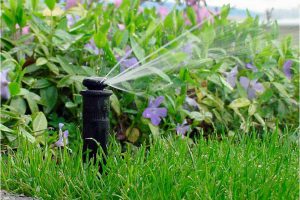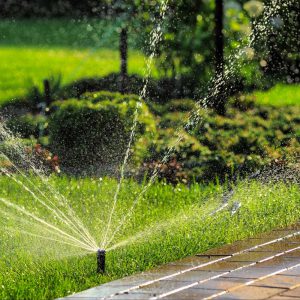
Spring Turn-On
Once the freezing temperatures have ceased, it is time to start watering again! However, when turning on you irrigation system, it is crucial to follow these steps to ensure no damage happens to your system.
- Open the system main water valve slowly to allow pipes to fill with water gradually. If these valves are opened too quickly, sprinkler main lines are subjected to high surge pressures, uncontrolled flow and water hammer, which may cause them to crack or burst.
- Verify the proper operation of each station valve by manually activating all zones from the controller.
- Walk through each station on the controller, checking for proper operation of the zone. Check for proper operating pressure (low pressure indicates a line break or a missing sprinkler), proper rotation and adjustment of sprinkler heads, and adequate coverage. Check and clean filters on poorly performing sprinklers. Adjust heads to grade as necessary.
- Reprogram the controller for automatic watering. Replace the controller back-up battery if necessary.
- Uncover and clean the system weather sensor, if applicable.

Winterizing
In the beginning of the winter season, it is important to winterize your irrigation system. There are several ways to drain your irrigation system and it is important to research the option that is best for you!
Irrigation systems are installed using one of three types of water removal; manual drain, auto drain or blowout. If you do not know your system type, it is best to use the blowout method.
Use the manual drain method when manual valves are located at the end and low points of the irrigation piping. To drain these systems, simply shut off the irrigation water supply and open all the manual drain valves.
Once the water has drained out of the mainline, open the boiler drain valve or the drain cap on the stop and waste valve (whichever is used in your area) and drain all the remaining water that is between the irrigation shut off valve and the backflow device. Open the test cocks on the backflow device. If your sprinklers have check valves, you’ll need to pull up on the sprinklers to allow the water to drain out of the bottom of the sprinkler body. Depending on the location of the drain valves, there could be some water left in the backflow, the piping, and the sprinklers. When all the water has drained out, close all the manual drain valves.
Whether it is manual, automatic, or a blowout, make sure to know which option is the best for you, your landscape and your irrigation system.
Visit www.hunterindustries.com for more information regarding each of these different methods.